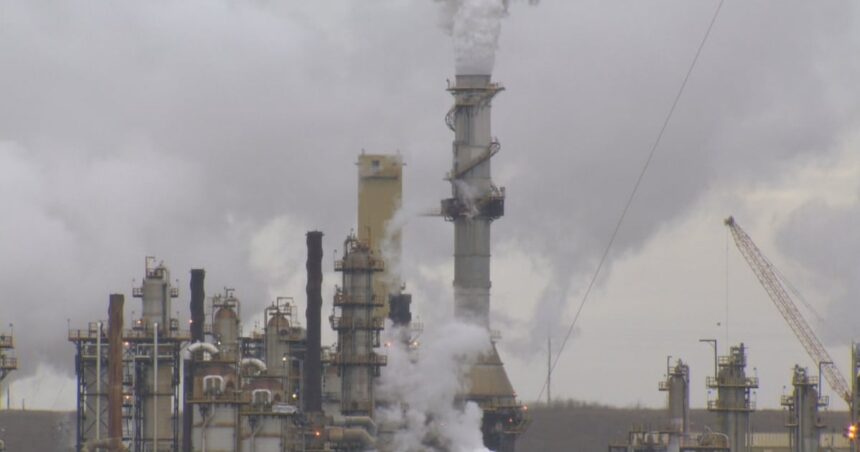In the cooling light of a Vancouver summer evening, I find myself scrolling through energy market reports that tell a story far different from what many Canadians expected just a few years ago. The volatility that once defined global oil markets seems to be settling into a new, more predictable rhythm – even as tensions across the Middle East continue to simmer.
“We’re witnessing what might be the most significant recalibration of energy markets in a generation,” explains Dr. Maya Indira, whom I met last month at the Pacific Energy Summit in Vancouver. As the head of transition economics at the Canadian Climate Institute, Indira has been tracking these shifts meticulously. “The data suggests we’ve entered an era where oil prices are finding a new equilibrium, largely between $65 and $70 per barrel, despite ongoing geopolitical pressures.”
This stability comes as a surprise to many, especially considering the persistent conflicts in the Middle East that historically would have sent prices soaring past $100. When I visited Fort McMurray earlier this spring, this new reality was palpable in conversations with workers and community leaders alike. There’s a growing recognition that the boom-and-bust cycles that once defined the region may be moderating.
The shift isn’t happening by accident. Global market dynamics have fundamentally changed. According to recent analysis from the International Energy Agency, the rapid expansion of electric vehicle adoption in China and Europe has begun to create meaningful impacts on oil demand projections. Last quarter alone, global EV sales increased by 27% compared to the same period last year, with over 14 million new electric vehicles expected to hit roads worldwide by the end of 2025.
“Electricity is becoming the new oil,” notes Ramesh Bhardwaj, senior energy analyst at RBC Capital Markets, during our phone conversation last week. “We’re seeing major institutional investors reallocating significant portions of their portfolios away from traditional petroleum assets and toward electricity infrastructure and renewable generation.”
The numbers tell a compelling story. Statistics Canada reports that investment in electricity infrastructure reached $26.7 billion in 2024, marking a 34% increase from 2022 levels. Meanwhile, capital expenditure in conventional oil extraction saw just a 7% increase during the same period.
This transition is creating winners and losers across Canada’s economy. In Alberta, companies that have diversified their energy portfolios are showing greater resilience. Suncor Energy, for instance, has expanded its investments in hydrogen and renewable energy projects by nearly $1.2 billion since 2023, according to their latest quarterly report.
When I visited the company’s new wind operation near Pincher Creek in February, project manager Leanne Cardinal told me, “We’re not abandoning our core business, but we recognize the energy landscape is evolving. This isn’t just about environmental commitments anymore – it’s sound business strategy in a changing market.”
The shift is affecting Canadian households too. In Burnaby, I met with the Chen family last month as they charged their new EV in their driveway. Michael Chen, an accountant, explained his family’s decision: “When we ran the numbers, the math just made sense. Between provincial incentives and what we’re saving on fuel, we’re actually coming out ahead financially, even with the higher upfront cost.”
This kind of calculation is becoming more common. Natural Resources Canada estimates that a typical Canadian household that switches from a gasoline-powered vehicle to an electric one saves approximately $1,500 to $2,000 annually on fuel and maintenance costs.
Yet not everyone is feeling optimistic about these shifts. In the resource-dependent communities of northern Alberta, anxiety persists about long-term economic prospects. “We’ve weathered downturns before,” says Derek Sanderson, a third-generation oil worker I interviewed in Cold Lake. “But this feels different. It’s not just about waiting for prices to bounce back anymore.”
The federal government’s Just Transition framework aims to address these concerns, with $2.1 billion allocated to worker retraining and community economic diversification over the next five years. However, provincial leaders have expressed skepticism about implementation timelines and whether the funding is sufficient for the scale of the challenge.
For investors, the new stability in oil prices offers both reassurance and caution. “We’re advising clients to expect oil to remain within the $65-$70 range through 2025, barring any major supply disruptions,” explains Melissa Warren, chief investment strategist at TD Wealth. “That predictability is actually helpful for planning, but it also signals that the days of explosive growth in traditional energy stocks may be behind us.”
The shift extends beyond North America. The European Union’s carbon border adjustment mechanism, which began its implementation phase this year, is creating new pricing pressures for carbon-intensive exports. Countries like Saudi Arabia and the United Arab Emirates have responded by accelerating their own economic diversification efforts, with massive investments in everything from artificial intelligence to tourism.
As twilight settles over the coastal mountains visible from my apartment window, I find myself reflecting on what these energy transitions mean for Canadian identity. Our national story has been so intertwined with resource extraction – from the fur trade to forestry to fossil fuels. Yet as markets evolve, so too must our economic narrative.
The stability in oil prices predicted for 2025 isn’t just a market forecast; it’s a window into a future where energy diversity becomes Canada’s new competitive advantage. The question now isn’t whether this transition will happen, but how we’ll navigate it together.






